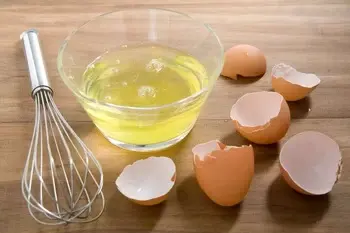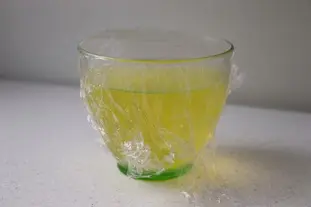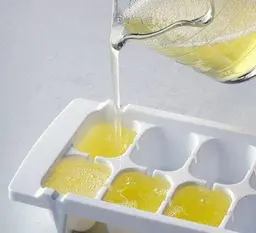This site uses only a few technical cookies necessary for its operation. By continuing to browse, you accept their use.
To find out more...
To find out more...
Egg whites management

Quite often, in cooking or pastry-making, we have recipes that use only egg yolks: gâteau breton (brittany butter cake), confectioner's custard, spaghetti carbonara, etc. And so, inevitably, we end up with unused egg whites that will have to be used elsewhere, in another recipe, and certainly later, for meringues, macaroons, Pavlova, etc.
And so, inevitably, we end up with unused egg whites that we will have to use elsewhere, in another recipe, and most certainly later, for perhaps meringues, macarons, a pavlova, a frozen nougat, and many others.
And so, inevitably, we end up with unused egg whites that we will have to use elsewhere, in another recipe, and most certainly later, for perhaps meringues, macarons, a pavlova, a frozen nougat, and many others.
11 K 4.9/5 (14 reviews)
Keywords for this post:Egg whiteUseConservationUsageLast modified on: June 12th 2021
Egg whites management
Is this a problem?
No, not so much, because egg whites keep for a long time, you can very well put them in a bowl or a container, which you film and keep in the fridge.
As egg whites are only water and proteins, they keep very well, they don't go mouldy and they keep all their qualities (well, they have almost no taste anyway).
Better still, for certain recipes such as macaroons, you will succeed more easily if you use "old" whites, the pastry chefs say "dry whites", which contain less water than fresh whites.

And for longer?
If you are worried about keeping them in the fridge for a long time, you can also freeze them very well.
But it would be a mistake to freeze 6 whites at once for example, you will be forced to defrost all 6 at once as well, which is not very flexible.
That's the trick, you have to freeze them individually by pouring them 1 by 1 into a silicone mould or ice cube tray:
![]()

The shape doesn't matter, it just needs to fit a whole white (about 50-60g).
If you have several whites in a bowl, because of their viscous aspect, they will not be easy to pour individually into the moulds.
So to make it easier you can give them a few whacks with a whisk, or even a quick blast with a mixer (2 or 3 seconds), this will make them more liquid and easier to pour/mould.
Then put in the freezer overnight to set, unmould into a freezer bag, and scoop in as you need to.
In summary: Egg whites keep well in the fridge, but they also freeze well, and in this case it's best to freeze each white individually so you can then scoop out just what you need.
Lasts posts
Butter vs. grease
We often read in a recipe where a pastry is put into a mould that, just before pouring, the mould should be buttered or greased. But what's the difference between these 2 terms?December 1st 20251,1025
Getting out of the fridge early
Very often when you're cooking, you need to take food or preparations out of the fridge, to use them in the recipe in progress. There's nothing tricky about this: you just take them out of the fridge and use them, usually immediately, in the recipe. But is this really a good method?November 24th 20251,1715
Who's making the croissants?
When you look at a bakery from the outside, you naturally think that in the bakery, the bakers make the bread, and in the laboratory, the pastry chefs make the cakes. It's very often like that, with each of these professions having quite different ways of working, but sometimes there's also one...November 23th 20251,073
Oven height
When we put a dish or cake in the oven, we naturally tend to put it on the middle shelf, and that's what we usually do. But in some cases, this position and height can be a little tricky, so let's find out why.October 8th 20252,8935
The importance of sieving
In recipes that use a fine powder (flour, powdered sugar, etc.), you'll often see the advice to sift before using it. To sift is to pass the powder in question through a sieve (a very fine strainer) before incorporating it into your recipe. It's often advice, but is it really useful?September 3rd 20257,6213
Other pages you may also like
A few tips for effective kneading at home
When you have to knead dough for bread or some other recipe, you may well use a food processor or the type of machine known as a stand mixer. The best-known brands are Kenwood and KitchenAid. They are useful tools, but here are a few tips to help you get the best out of them.June 23th 2021284 K 23.8
How to avoid lumps
You've probably come across this unpleasant phenomenon where, when you try to incorporate an ingredient (usually a solid or powder) into a preparation (usually a liquid), the mixture doesn't mix properly and you end up with little "balls" or little lumps of the solid part that refuse to mix with the...October 9th 202022 K4.8
Choosing a chopping board
It's a no-brainer, surely? If you want a chopping board, just find a piece of wood, and Bob's your uncle! You can happily chop away with a knife and not damage the table or worktop. But in reality, it's a bit more complicated than that. You need to be careful what you are buying, in particular the...May 8th 201250 K4.6
Steam for baking bread
What does steam have to do with bread-making? This is not only a bakers' secret, it is something you might not think of at all: if you make bread and bake it like a cake, you will end up with bread, but pale and with a thick, hard crust – a long way from the golden-brown crusty loaf you had in...June 16th 2021147 K4.5
Candied fruits: don't get ripped off
Do you like candied fruit? You might like to nibble a handful or add it to a recipe, like a classic fruit cake or delicious Italian specialities like panettone or sicilian epiphany pie.June 21th 201767 K 24.2
Post a comment or question
Follow this page
If you are interested in this page, you can "follow" it, by entering your email address here. You will then receive a notification immediately each time the page is modified or a new comment is added. Please note that you will need to confirm this following.
Note: We'll never share your e-mail address with anyone else.
Alternatively: you can subscribe to the mailing list of cooling-ez.com , you will receive a e-mail for each new recipe published on the site.









